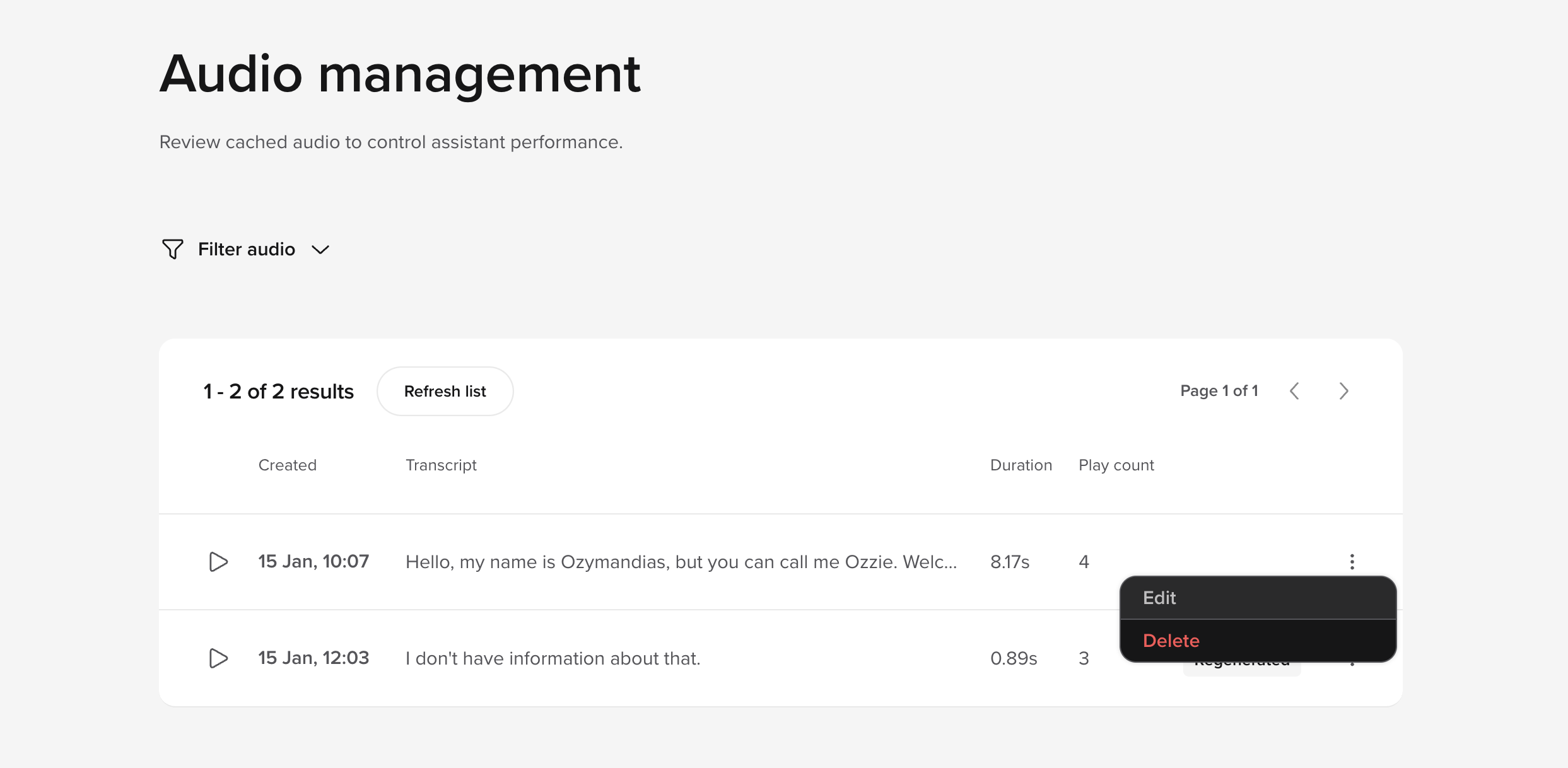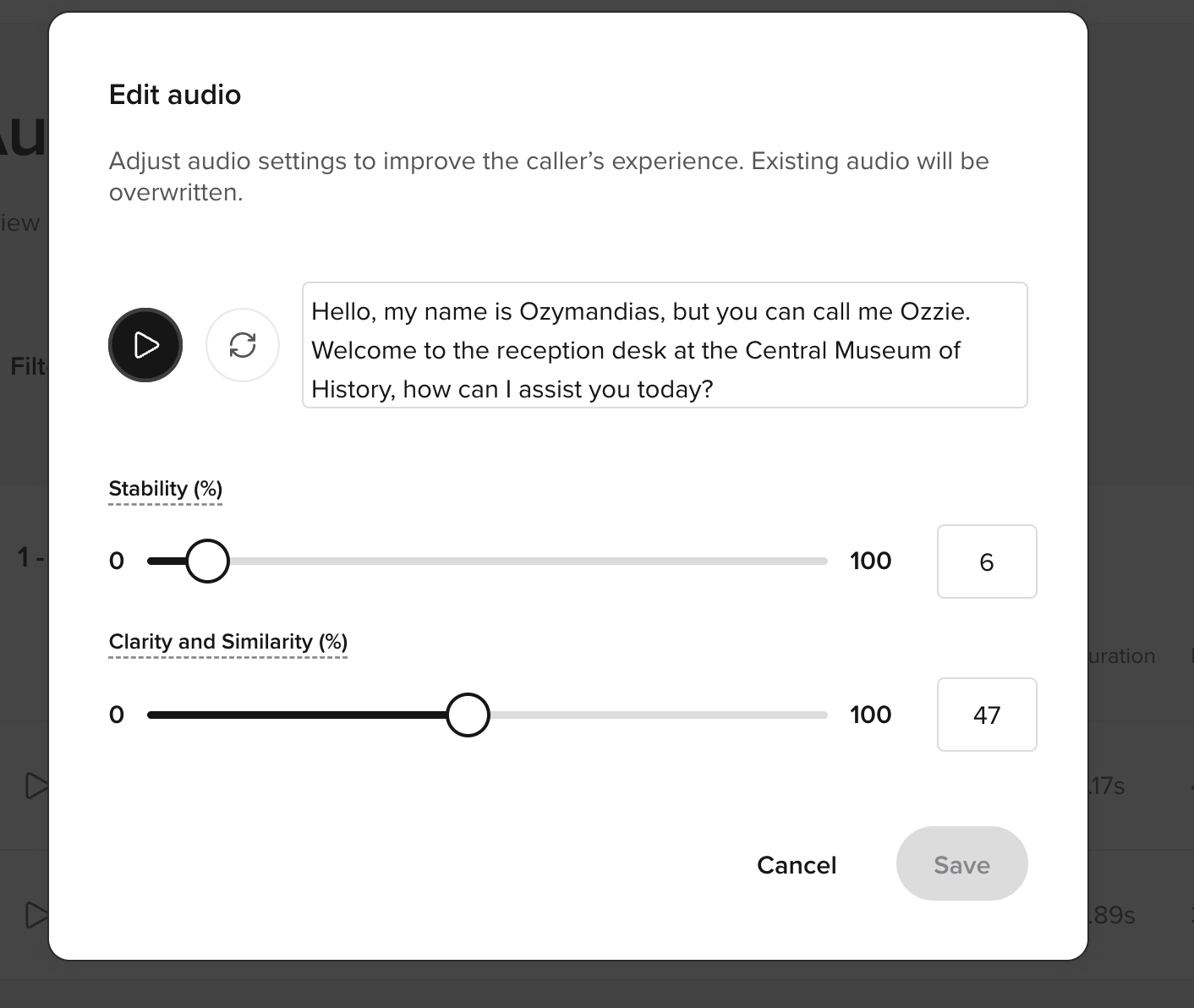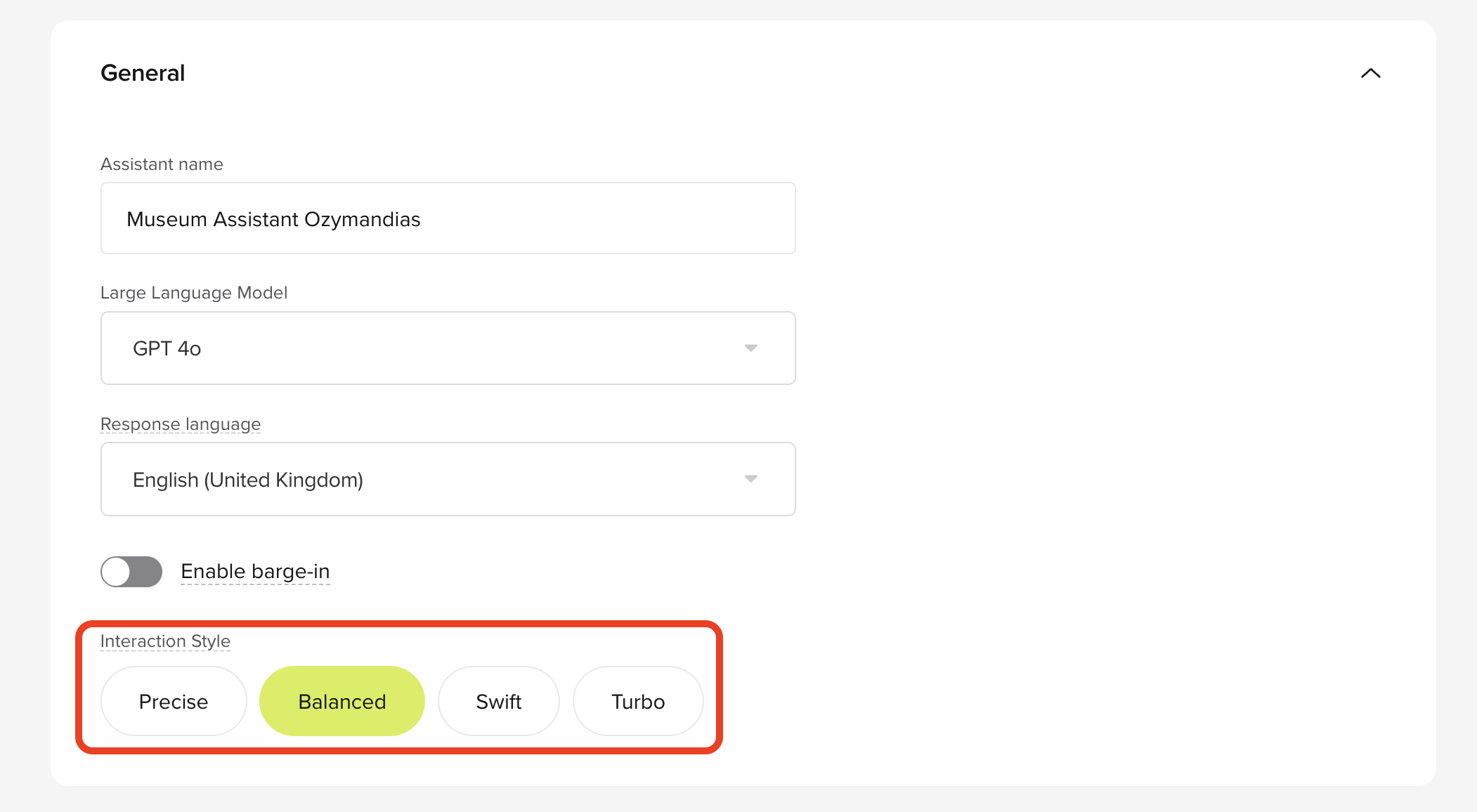
Benefits
- Latency reduction: Serve cached audio to minimize TTS latency.
- Improved audio quality: Dependable, reliable high-quality TTS generation using the cache.
- Consistency: Maintain uniform voice quality and brand voice and tone across all your agent interactions.
Getting started
To manage your agent’s audio:- Go to the Audio Management tab.
- Review all audio saved to the cache and monitor how often it has been used by the agent.
- You can delete cached files and upload new ones to overwrite existing audio.
- Edit options
- Add IPA syntax
You can edit the stability and clarity of the agent’s voice specifically for this utterance. For more information on these settings, visit the voice feature page. The edit tab also includes sync and play buttons so you can test changes to the utterance live in the edit panel.

Interaction style
The Interaction style settings feature lets you adjust your agent’s response latency settings. Customize how quickly the agent replies to balance speed and accuracy based on your project’s requirements.Benefits
- Customizable response time: Choose from predefined modes tailored to your needs.
- Enhanced user experience: Minimize wait times or maximize response precision to optimize interactions.
Interaction style settings

- Locate the Interaction style section in the Settings menu.
- Choose from the available modes:
- Swift Mode
- Balanced Mode
- Precise Mode
- Turbo Mode
- Click on the bubble for your preferred mode. A brief description of the mode will appear.
- Save your settings to apply changes. Your agent will adjust its behavior immediately.
Performance characteristics
Each response mode is designed for specific performance needs:Turbo
- Latency: 400ms
- Description: This is our ultra-fast mode, designed to make the agent more responsive by reducing the wait time before it responds to a caller. However, this increased speed may cause the agent to interrupt more frequently. To address this, we recommend enabling barge-in when using turbo mode. Barge-in helps balance the agent’s rapid responses by allowing callers to regain control seamlessly.
Swift
- Latency: 1200ms
- Description: Prioritizes speed, providing the fastest response times with higher interruption tolerance. Best for quick interactions where speed is more valuable than precision.
Balanced
- Latency: 1600ms
- Description: Offers moderate speed and balanced interruption levels. Ideal for general use cases requiring a compromise between responsiveness and accuracy.
Precise
- Latency: 2000ms
- Description: Delivers the most accurate responses with minimal interruptions, at the cost of slower response times. Suitable for scenarios where accuracy is paramount.

